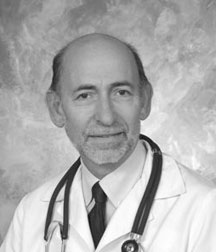|
|
|
Breast Thermography – The Mammography Alternative?
by Moshe Dekel, MD • Oceanside, NY
If you ask ten women, or men, if they are familiar with Breast Thermography, nine would say no.
This is a surprising fact, since medical thermography has been in use since the early 1970’s and the modality was approved by the FDA in 1982 for breast cancer detection and risk assessment, as an adjunct to mammography.
The reason why so few people know about Breast Thermography is because the medical establishment, the American Cancer Society and most women’s organizations are still very comfortable recommending Mammography. The difference between the two modalities is profound. Mammo-graphy, like MRI and sonography, is an anatomical study; it looks at anatomical changes of the breast. It may take up to ten years for the tumor to grow to a sufficient size to be detectable by either a mammogram or a physical examination. By that time, the tumor has achieved more than 25 doublings of the malignant cell colony and may have already metastasized.
Thermography is a physiological study. The infrared camera detects the heat (infrared radiation), which is emitted by the breast without physical contact with it (no compression) and without sending any signal (no radiation). This is a receiving mode only. It shows small, unilateral temperature increases, which are caused by an increased blood supply to cancer cells. Cancer cells have an ability to create new blood vessels to the effected area (neoangiogenesis) in order to satisfy the increased demand for nutrients resulting from the higher rate of growth and metabolic demands of the new colony. It was found that even a few thousand cancer cells (early stage of the disease) secrete Nitric Oxide; a powerful vasodilator, in order to achieve the same results.
Physiological changes can precede anatomical mammographic detection by seven to ten years, therefore, allowing us to react early in a preventative mode that may stop the development of overt cancer. The study is interpreted with the help of computer analysis of the 75,000 temperature pixels displayed in each of the 18 digital images that are taken in each study. The study can be interpreted as normal, low moderate or higher risk. A holistic protocol is then implemented in order to prevent the formation of overt cancer.
One of the major limitations of mammography is its inability to diagnose cancer in the case of dense breast. I am sure that some readers will identify with the inconclusive reading of their mammography and their “invitation” to take another one in six months. The patient may or may not know that the density of the breast will not change in that period of time.
For more than two decades, the medical establishment, the National Cancer Institute, the American Cancer Society, and the media have promoted Mammography as the main screening procedure for breast cancer. The current recommendation is to have a base line Mammography at the age of forty and for women with family history of breast cancer to start as early as age thirty.
In September 2000, a large, long-term Canadian study found that an annual mammogram was no more effective in preventing deaths from breast cancer that periodic physical examinations for women in their 50’s. Half of the almost 40,000 women ages 50 to 59 received periodic breast examinations alone and half received breast examinations plus mammograms. All learned to examine their own breasts as well. By 1993, 13 years after the study began; there were 610 cases of invasive breast cancer and 105 deaths in the women who received only breast examinations, compared with 622 invasive breast cancers and 107 deaths in those who received breast examinations and mammograms.
Alternative Medicine has maintained for years that mammograms do far more harm than good. Their ionizing radiation mutates cells, and the mechanical pressure on the breast can spread cells that are already malignant (as can biopsies). In 1995, the British medical journal, The Lancet, reported that since mammographic screening was introduced in 1970’s, the incidence of ductal carcinoma in situ (DCIS), which represents 12% of all breast cancer cases, had increased by 328% and that 200% of this increase was due to the use of mammography. Since the inception of widespread mammographic screening, the increase for DCIS in women under the age of 40 has risen over 3000%.
Eighty percent of the million breast biopsies performed each year in the US, because of a suspicious mammography, are negative. Why, then, does mainstream medicine keep recommending mammograms? A $100 mammogram for all 62 million U.S. women over 40, and a $1,000+ biopsy for 1- to 2-million women, is an $8 billion per year industry.
Mammography cannot detect a tumor until after it has been growing for years and reaches a certain size. Thermography can detect the possibility of breast cancer much earlier, because it can image the early stages of increased blood supply to cancer cells, which is a necessary step before they can grow into a detectable size tumor.
Breast Thermography is not promoted here as a replacement for mammography, but rather to inform women about their options regarding the prevention of breast cancer.
In private practice for twenty-five years, Dr. Dekel is a Board Certified MD, in OB-GYN and Breast Thermography. He was an assistant clinical professor at Stony Brook Medical Center and served as the Chief of GYN surgery at the Long Island Surgi-Center. Dr. Dekel transitioned to holistic/ integrative medicine six years ago and focuses on prevention, bio-identical hormone replacement for men and women, and breast Thermography. www.drdekel.com.
|

